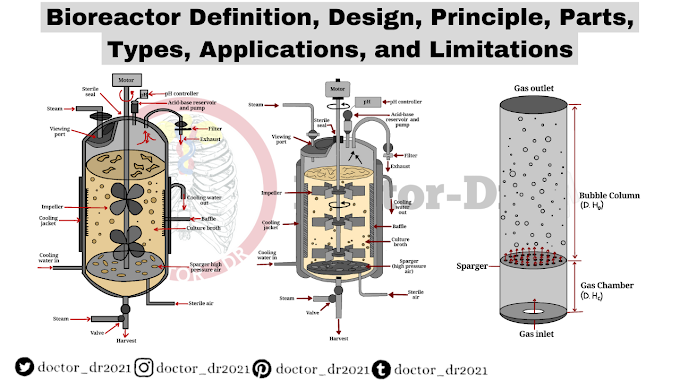Table of Content:
- Introduction
- What is Neisseria gonorrhoeae?
- Microbial Anatomy and Growth Characteristics
- Distinguishing N. gonorrhoeae from Other Neisseria Species
- Virulence Factors: How N. gonorrhoeae Invades and Evades
- Clinical Manifestations
- Symptoms
- Diagnosis and Laboratory Testing
- Treatment and Prevention
- Summary
Introduction to Neisseria gonorrhoeae
Neisseria gonorrhoeae, commonly known as N. gonorrhoeae, is a fascinating yet formidable bacterium responsible for one of the most common sexually transmitted infections worldwide—gonorrhea. Discovered by the German physician Albert Neisser, this gram-negative, oval-shaped bacterium has intrigued microbiologists and medical professionals for decades due to its unique features, virulence factors, and the challenges it poses in treatment and prevention.
What is Neisseria gonorrhoeae?
The name Neisseria gonorrhoeae combines the discoverer’s name with Greek roots: “gonos,” meaning seed, and “rhoe,” meaning flow. This etymology refers to the penile purulent discharge observed in infected males, which was historically mistaken for semen. N. gonorrhoeae is a gram-negative diplococcus bacterium, meaning it appears as pairs of coffee bean-shaped cells under the microscope.
Microbial Anatomy and Growth Characteristics
As a gram-negative bacterium, N. gonorrhoeae has a thin peptidoglycan cell wall layer, which does not retain the purple dye of Gram staining but instead takes up the pink safranin dye. It is non-motile, non-spore forming, and an obligate aerobe, requiring oxygen to thrive. Biochemically, it tests positive for catalase and oxidase enzymes.
Laboratory cultivation of N. gonorrhoeae requires a specialized medium called Thayer-Martin agar, enriched with sheep blood and selective antimicrobials like vancomycin and nystatin to inhibit unwanted bacteria and fungi. This selective environment allows Neisseria species to grow effectively.
Distinguishing N. gonorrhoeae from Other Neisseria Species
One common diagnostic challenge is differentiating N. gonorrhoeae from its close relative, Neisseria meningitidis. Both share similar growth characteristics and enzyme profiles. However, the maltose fermentation test provides a clear distinction:
- N. gonorrhoeae: Does not ferment maltose; the phenol red-maltose broth remains red after incubation.
- N. meningitidis: Ferments maltose; the broth turns yellow due to fermentation byproducts.
Virulence Factors: How N. gonorrhoeae Invades and Evades
Although N. gonorrhoeae lacks a protective polysaccharide capsule—a feature that distinguishes it from N. meningitidis—it compensates with several potent virulence factors that enable it to colonize, invade, and evade the host immune system.
Pili and Antigenic Variation
The bacterium’s pili are tiny, hair-like projections that allow it to adhere firmly to mucosal surfaces, such as the genital tract lining. These pili also form conjugation pili, which facilitate the exchange of genetic material, including antibiotic resistance genes, between bacteria.
One remarkable feature of these pili is their ability to undergo phase variation. This means the antigenic proteins composing the pili change their structure with each infection, helping N. gonorrhoeae escape immune detection and memory. This constant antigenic shift is a major reason why developing an effective vaccine against gonorrhea remains elusive.
IgA Protease and Immune Evasion
N. gonorrhoeae produces an enzyme called IgA protease, which targets Immunoglobulin A (IgA)—an antibody abundant in mucosal secretions like vaginal and cervical fluids. By breaking down IgA, the bacterium disables a critical first line of immune defense, preventing effective opsonization and clearance by neutrophils.
Survival Inside Neutrophils
Despite some bacteria being opsonized and engulfed by neutrophils, N. gonorrhoeae has adapted mechanisms to survive intracellularly. It produces catalase, an enzyme that neutralizes reactive oxygen species like hydrogen peroxide (H₂O₂) inside the neutrophil’s phagosome. This allows the bacterium to hijack the neutrophil’s energy and multiply until the immune cell bursts, releasing numerous bacteria into the bloodstream—a condition known as gonococcemia.
Lipooligosaccharide (LOS) and Sialylation
Another virulence factor is the lipooligosaccharide (LOS) in the bacterial cell wall, which can trigger a powerful immune response leading to sepsis. To avoid detection, N. gonorrhoeae can coat its LOS with sialic acid—a molecule naturally found on host cells. This process, called sialylation, camouflages the bacterium, allowing it to evade immune surveillance.
Clinical Manifestations of N. gonorrhoeae Infection
Gonorrhea primarily affects the genital tract but can cause a range of symptoms and complications depending on the site and severity of infection.
In Males
- Urethritis: Characterized by burning during urination and urethral discharge that may be clear, purulent, or bloody.
- Prostatitis: Infection of the prostate gland.
- Epididymitis: Inflammation of the epididymis, which can cause scrotal pain and swelling.
In Females
- Urethritis and vaginitis: Inflammation of the urethra and vagina, often accompanied by thick, white, purulent vaginal discharge.
- Cervicitis: Inflammation of the cervix.
- Pelvic Inflammatory Disease (PID): When the infection ascends to the uterus, fallopian tubes, and ovaries, causing severe pelvic pain and fever.
- Fitz-Hugh-Curtis Syndrome: A rare complication where inflammation spreads to the peritoneum and liver capsule, forming “violin string” adhesions.
Neonatal and Systemic Infections
- Early Neonatal Conjunctivitis: Transmitted from an infected mother during vaginal delivery, causing eye inflammation in newborns within 2 to 5 days.
- Gonococcemia: Bacteria in the bloodstream can infect joints (gonococcal arthritis) or heart valves (endocarditis), leading to serious systemic illness.
Symptoms of N. gonorrhoeae
Recognizing gonorrhea symptoms early can prevent complications:
- Men: Burning sensation when urinating, urethral discharge that may turn purulent or bloody.
- Women: Thick vaginal or urethral discharge, sometimes bloody, with pelvic pain and fever if PID develops.
- Neonates: Swollen eyelids with mucus and pus discharge.
- Systemic: Joint pain and swelling in gonococcal arthritis; fever, chills, and malaise in endocarditis.
Diagnosis and Laboratory Testing of N. gonorrhoeae
Diagnosis typically involves collecting swabs from the urethra or vagina, followed by:
- Gram Staining: Reveals pink, coffee bean-shaped diplococci inside neutrophils.
- Culturing on Thayer-Martin Agar: Confirms the presence of N. gonorrhoeae.
- Nucleic Acid Amplification Testing (NAAT): Detects bacterial genetic material, offering a highly sensitive diagnostic tool.
Treatment and Prevention of N. gonorrhoeae
The frontline treatment for gonorrhea involves third-generation cephalosporins, especially ceftriaxone. Since coinfection with Chlamydia trachomatis is common, antibiotics such as azithromycin or doxycycline are often prescribed alongside ceftriaxone to cover both infections.
Prevention strategies focus on safe sexual practices, with consistent and correct use of condoms being the most effective way to reduce transmission.
Summary of N. gonorrhoeae
Neisseria gonorrhoeae is a gram-negative, non-motile diplococcus that thrives on Thayer-Martin agar and is catalase and oxidase positive but maltose negative. Despite lacking a capsule, it boasts several virulence factors, including pili with antigenic phase variation, IgA protease, and LOS with sialylation capabilities.
Clinically, N. gonorrhoeae causes gonorrhea, which presents as urethritis in men and vaginitis or cervicitis in women. Untreated infections can escalate to gonococcemia, leading to serious complications like septic arthritis and endocarditis. Effective treatment requires ceftriaxone combined with antibiotics targeting potential chlamydial coinfections, while prevention hinges on safe sexual behaviors.
Understanding the biology and pathogenesis of N. gonorrhoeae equips us better to combat this persistent public health challenge.



~1.webp)




